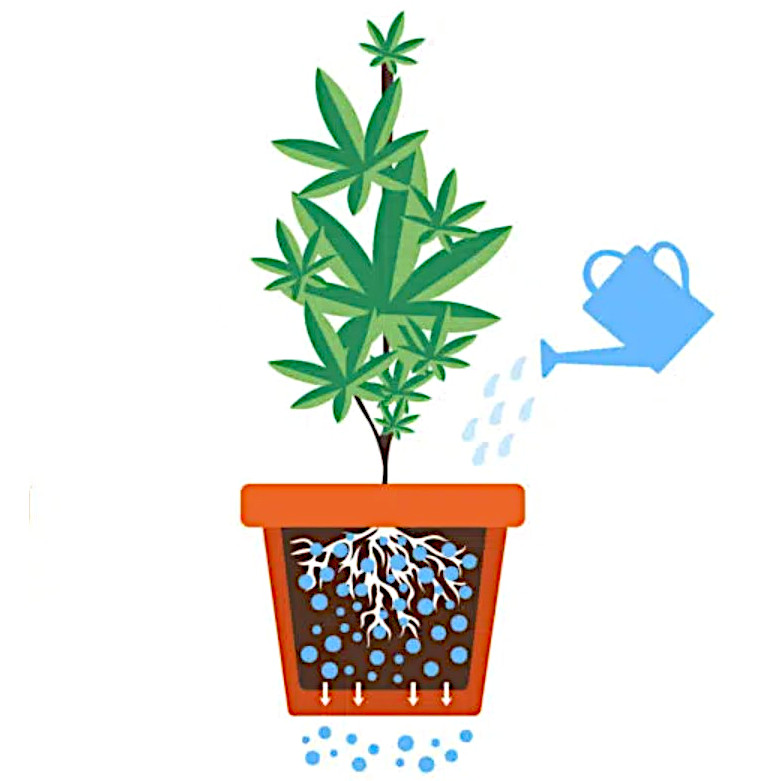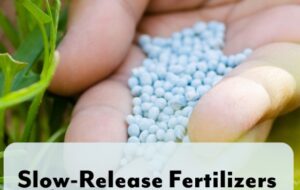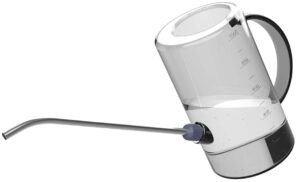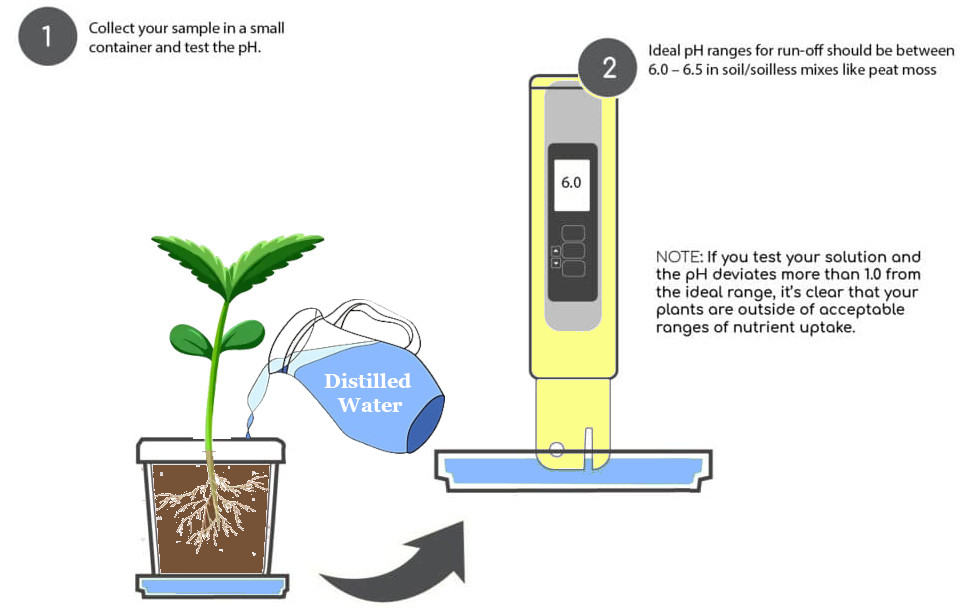If you’re a cannabis grower, you know how important it is to maintain the health of your plants. Unfortunately, sometimes your cannabis plants can become sick or develop nutrient deficiencies, leading to stunted growth and poor yields. In such cases, flushing your plants soil or coco coir can be a crucial step in restoring their health and vitality.
In this comprehensive guide, we will explore the process of flushing sick cannabis plants, why it is necessary, and how to do it effectively without causing harm. We will also discuss how to fix incorrect pH levels without flushing and provide tips on preventing the need to flush your plants altogether.
Why Flush Cannabis Plants in the First Place?
Flushing your plants involves leaching out excess nutrients or salt buildup in the soil or coco coir. It is done to correct imbalances at the roots and ensure optimal nutrient uptake by the plants. Flushing is particularly important in the following situations:
Fixing pH Imbalances
One of the main reasons for flushing your plants is to address pH problems at the roots. If the pH is too high or too low, it can cause major nutrient deficiencies, leading to sickly plants. Flushing helps to restore the pH balance and allows the plants to absorb nutrients properly.
Removing Harmful Additives
If your plants have been watered with something that has made them sick, such as a pesticide, nutrient, or supplement that was too strong, it is crucial to flush them. Flushing helps to remove these harmful additives from the soil or growing medium, allowing the plants to recover.
Leaching Out Time-Release Nutrients
In some cases, growers use soil with “time-release” nutrients, which slowly release nitrogen over an extended period. However, too much nitrogen during the flowering stage can result in undesirable taste and smaller buds. Flushing before the flowering stage begins helps to leach out the excess nitrogen, ensuring optimal bud development.
Which Growers Should Flush Their Plants?
Flushing sick plants is recommended for growers using soil, coco coir, or other soilless mediums. However, it is not necessary for those using hydroponic or DWC (Deep Water Culture) setups. In hydroponic systems, any nutrient or pH problem can be addressed by changing the reservoir solution.
How to Prevent the Need to Flush Your Plants
Flushing can be a stressful process for plants, so it is best to prevent nutrient problems before they occur. Here are some tips to avoid the need for flushing:
- Alternate Watering with Plain Water: When hand-watering your plants, give them plain water every other watering. This helps to flush out excess nutrients and prevent nutrient buildup.
- Start with Half-Strength Nutrients: Always begin with half-strength nutrients and only increase the dosage if the plants show signs of nutrient deficiencies. This gradual approach prevents overfeeding and nutrient imbalances.
- Monitor and Adjust pH: Regularly check and adjust the pH of your plants’ water. Maintaining the pH within the appropriate range is crucial for preventing nutrient deficiencies and reducing the likelihood of needing to flush your plants.
- Adjust Grow Light Height: If your plants show signs of nutrient problems, try moving the grow light up a few inches. This adjustment can help the plants recover more effectively and may eliminate the need for flushing.
By following these preventive measures, you can minimize the chances of your plants becoming sick or developing nutrient deficiencies, reducing the need for flushing.
Flushing Your Plants: Step-by-Step Guide
Flushing your plants involves specific steps to ensure effective nutrient leaching without causing harm. Follow these steps to flush your plants and promote their recovery:
Step 1: Make up Low-Nutrient Water
To begin the flushing process, prepare water with low levels of nutrients. Use a quarter-strength or seedling dose of nutrients to replace the bad nutrients with fresh ones. This step helps to gradually restore nutrient balance in the growing medium.
Step 2: Give 3x the Pot Size in Water
Provide enough water to your plants so that you’re giving them three times the volume of their pots. For example, if the pot holds one gallon of soil, give three gallons of water. This ensures thorough flushing of the growing medium and helps remove excess nutrients or salts.
Step 3: Give Regular Strength Nutrients at the End
Once you have flushed out the excess nutrients, prepare a batch of nutrient water at regular strength. Give this nutrient water to your plants to replace what you removed during the flushing process. This step ensures that your plants receive the necessary nutrients for recovery.
| Week of Growth | TDS Levels (ppm) | EC Levels (mS/cm) | pH of Nutrient Solution |
|---|---|---|---|
| 1 Vegetative | 100-250 | 0.2-0.5 | 5.8-6.5 |
| 2 Vegetative | 250-350 | 0.5-0.7 | 5.8-6.5 |
| 3 Vegetative | 350-500 | 0.7-1.0 | 5.8-6.5 |
| 4 Vegetative | 500-700 | 1.0-1.4 | 5.8-6.5 |
| 5 (early flowering) | 700-900 | 1.4-1.8 | 5.8-6.5 |
| 6 (early flowering) | 800-1000 | 1.6-2.0 | 5.8-6.5 |
| 7 (mid flowering) | 900-1100 | 1.8-2.2 | 5.8-6.5 |
| 8 (mid flowering) | 1000-1200 | 2.0-2.4 | 5.8-6.5 |
| 9 (late flowering) | 1100-1300 | 2.2-2.6 | 5.8-6.5 |
| 10 (late flowering) | 1200-1400 | 2.4-2.8 | 5.8-6.5 |
| 11 (late flowering) | 1300-1500 | 2.6-3.0 | 5.8-6.5 |
| 12 (ripening/harvest) | <1000 | <2.0 | 5.8-6.5 |
Step 4: Ensure Adequate Air Circulation
To aid in the drying process and prevent overwatering, ensure there is a fan blowing over the top of the growing medium. Sufficient air circulation helps the medium dry out faster and prevents the plants from becoming droopy due to excessive moisture.
Step 5: Adjust Grow Light Height
While your plants are recovering, raise your grow lights a few inches to reduce stress on the plants. They still need sufficient light for photosynthesis, but it’s important not to overwork them during the recovery period.
Step 6: Monitor and Wait for Improvement
After flushing, give your plants a few days to recover. Although they may initially appear droopy, you should start to see improvement within a few days. Avoid watering your plants again until the top inch of the growing medium starts to dry out. It’s generally not recommended to flush your plants multiple times in a row.
How to Fix Incorrect pH Without Flushing your Plants
If your plants have incorrect pH levels but don’t exhibit major nutrient problems, flushing may not be necessary. Instead, you can fix the pH gradually by following these steps:
Step 1: Determine the Target pH
Depending on your growing medium, determine the appropriate pH range. For soil, the pH should be between 6 and 7, while for coco coir, it should range from 5.5 to 6.5. This step helps you understand the direction in which you need to adjust the pH.
Step 2: Collect Runoff Water
Water your plants with the correct pH level and collect the runoff water that drains out from the bottom. Analyze the pH of the runoff water to determine whether it is higher or lower than the desired range.
Step 3: Start Correcting the pH
If the pH is outside the desired range, don’t panic. You’re already providing water with the correct pH from the top, which helps maintain plant health. Wait until your next watering to start correcting the pH.
Step 4: Water with Opposite pH Range
During the next watering, provide water with the correct pH but at the opposite end of the range. For example, if the runoff water has a pH of 4.5, water your plants at the high end of the desired pH range. This approach gradually corrects the pH imbalance over time.
Step 5: Maintain Correct pH
Continue watering your plants with water in the correct pH range, gradually moving towards the target pH. Eventually, the runoff water will come out within the desired pH range, ensuring optimal nutrient uptake by the roots.
By following these steps, you can fix incorrect pH levels without the need to flush your plants entirely, reducing stress and promoting faster recovery.
Flushing your Plants FAQ
Q1: Why is flushing necessary for cannabis plants? A1: Flushing removes excess nutrients or salts from the soil, correcting imbalances and ensuring optimal nutrient uptake. It’s crucial for addressing pH issues, eliminating harmful additives, and leaching out time-release nutrients.
Q2: When should I flush my cannabis plants? A2: Flush when facing nutrient deficiencies, pH imbalances, or if your plants have been exposed to harmful substances. It’s also recommended before the flowering stage for soil with time-release nutrients.
Q3: Is flushing required for hydroponic or DWC setups? A3: No, it’s generally unnecessary for hydroponic systems. Nutrient or pH problems in hydroponics can be addressed by changing the reservoir solution.
Q4: How can I prevent the need to flush my plants? A4: Alternately water with plain water, start with half-strength nutrients, monitor and adjust pH regularly, and adjust grow light height if nutrient problems arise.
Q5: Can flushing harm my plants? A5: When done correctly, flushing is beneficial. Ensure gradual changes in nutrient levels, adequate air circulation, and monitor plant recovery. Avoid multiple consecutive flushes.
Q6: How do I fix incorrect pH levels without flushing? A6: Determine target pH, collect runoff water, and gradually correct pH by watering with the correct pH but at the opposite end of the range during subsequent waterings. Maintain correct pH for optimal nutrient uptake.
Q7: Can I use tap water for flushing? A7: It depends on your tap water’s quality. If it’s high in salts or minerals, consider using filtered water. Test the pH and EC of your tap water to ensure it won’t introduce additional issues during flushing.
Q8: How long does it take for plants to recover after flushing? A8: Recovery time varies, but improvement should be noticeable within a few days. Avoid watering until the top inch of the growing medium starts to dry. Patience is key for observing long-term benefits.
Q9: Can I flush my plants during the flowering stage? A9: While it’s generally not recommended, if necessary, do it early in the flowering stage. Flushing late in flowering may stress the plants and impact bud development.
Q10: What should I do if my plants show signs of overfeeding after flushing? A10: Adjust your future nutrient regimen, starting with half-strength nutrients and gradually increasing. Monitor plant response and adjust accordingly to avoid overfeeding and nutrient imbalances.
Conclusion
Flushing sick cannabis plants is a crucial step in restoring their health and correcting nutrient imbalances. By following the steps outlined in this comprehensive guide, you can effectively flush your plants without causing harm and promote their recovery. Remember to monitor pH levels, provide appropriate nutrients, and maintain a healthy growing environment to prevent the need for flushing in the first place. With proper care, your cannabis plants will thrive and reward you with bountiful yields. Happy growing!







